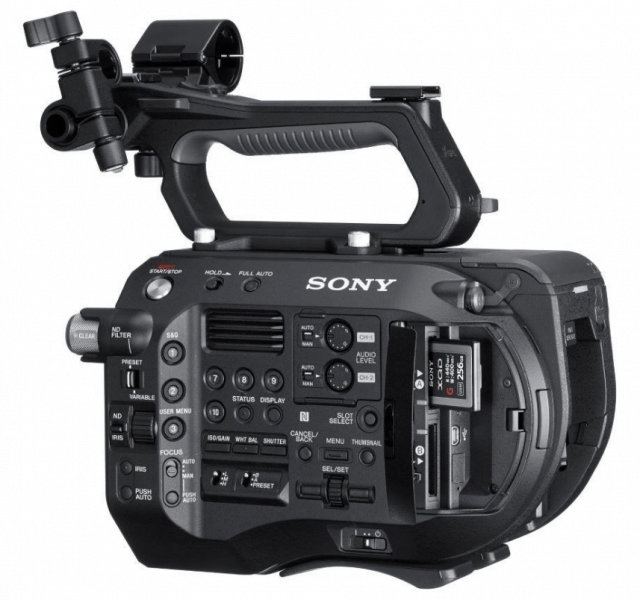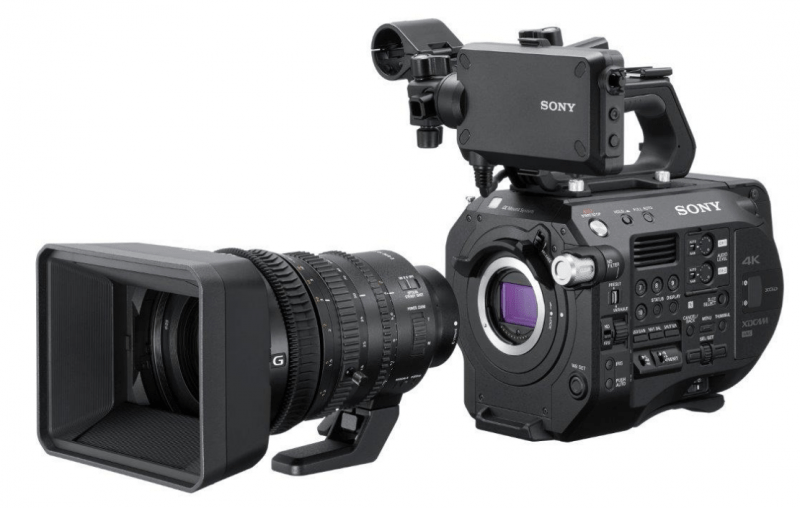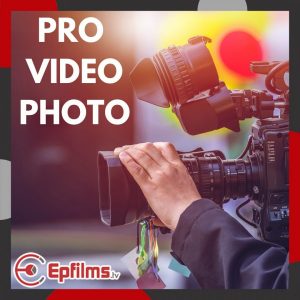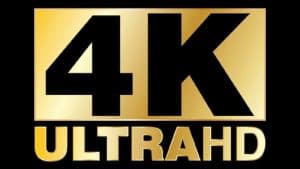Last Updated on July 10, 2020
Features
- Super 35mm Single-chip Exmor CMOS Sensor
- E-mount (lever lock type)
- DCI 4K (4096 x 2160) up to 59.94p
- UHD up to 59.94 fps, HD up to 180 fps
- Electronic Variable ND Technology
- 14 stops of exposure latitude
- ISO 2000 sensitivity
- Dual XQD Memory Card Slots
- Dual HD/3G-SDI & HDMI Output
Sony FS7 Introduction Video
Sony FS7 Overview
Last November 9, Sony announced in its official blog site that it is expanding its FS series camera with the new FS7 camcorder. According to the report, the new model builds on the strengths of the original FS7, delivering advanced features designed for documentary and indie production with the addition of Electronic Variable ND Filter system, lever lock type E-Mount and refined mechanical design.
Since its introduction in 2014, Sony’s FS7 has become the most popular camera used in a range of video productions, and it looks like it will continue to be so with the arrival of its “upgraded” version. Yes, you read that right, a day of tinkering with the new device will make it quite clear that it is more of an “update” rather than an entirely new camera. So, what else is new with the FS7 II? Let us take a look at its design and features.
Design and Features
The company first introduced the Electronic Variable ND Filter technology on their X camera series in 2015 but the feature was even more emphasized in the FS5. This time in the FS7 II, the filter is upgraded to a layer of LCDs placed between the sensor and the lens-mount. Its strength can be assigned to presets or dialed using the ‘variable’ wheel located on the side of the camera. This design allows you to easily change the amount of light hitting the sensor during a scene while maintaining the aesthetics of your shots.
“The FS7 II features state of the art, Sony variable ND technology and a robust locking E-Mount,” said Sony Electronics senior product manager Juan Martinez in an interview. “Extensive enhancements to the VF support system enables super-fast and secure viewfinder repositioning, while retaining the Zen-like simplicity, flexibility and comfort of the FS7’s ‘multi-award winning’ industrial design.”
The E-Mount has become widely popular among lens manufacturers that almost all of them produce lens for this kind of mount already, and for good reasons – the E-Mount’s sensor is distanced perfectly in that it makes it possible to use a variety of third party lenses using adapters. But the lens mount is not without its shortcomings. Since it was particularly designed for still photography lenses, it lacks stability and does not have a rotation-less locking mechanism.
Sony solves both issues in the upgraded FS7 by introducing the E-Mount Lever Lock. The upgraded lens mount is designed with a locking mechanism very similar to the PL mount system in cinema productions. It allows you to set the lens in place by just turning the collar instead of twisting the lens. It is ideal for large camera setups and when the camera is on a tripod.
What else is new to the FS7 II?
The ND filter and lever lock type E-Mount are so far the only biggest new additions to the FS7 II, but some improved mechanical design are also worth mentioning. One of which is a power LED next to the on/off switch, allowing you to check if the camera is turned on. Another is the 10 assignable user buttons; the previous version only has 6. Also, the XQD cards which used to be hard to grab now stick out at 4.3mm more, allowing you remove and replace them more easily.
Of course, we should not forget to mention the big improvements to the big viewfinder loupe: the FS7 II now only has one flimsy loupe attachment and is added with a foldable sunhood as a replacement for the loupe when the LCD is used under sunlight. In addition, the round rod supporting the LDD is replaced with a square one to avoid tilting of the LCD.
Pros and Cons
The upgraded E-Mount Lever Lock definitely brings lots of stability, especially for cinema productions and large camera set-up. However, having to twist the lens mount while pressing the lock release could pose an issue to single-operator, hand-held shooters.
Also, while the square rod supporting the LCD helps avoid tilting, the rod is still too short for proper shoulder work when using a big loupe.
Final Thoughts
Now, here comes the most important part, should you get Sony FS7 II? The device will be priced $1,500 higher than FS7 Mark 1, selling at a steep price of $10,000 considering its lack of major innovation and improvements. But if you think that E-Mount Lever Lock would be very useful for you, then it would be worth it. Also, another reason you should go for it is the new Sony E PZ 18-110mm f/4 optional kit lens which will save you lots of money when bought in a bundle with the camera.
| Image Device | Super 35mm Single-Chip Exmor CMOS |
| Effective Picture Elements | 17:9 4096 (H) x 2160 (V) 16:9 3840 (H) x 2160 (V) |
| Signal-to-Noise Ratio | 57 dB (Y) |
| Sensitivity | 2000 lx, 89.9% reflectance T14 (3840 x 2160/23.98p mode 3200K)ISO Sensitivity ISO 2000 (S-Log3 Gamma D55 Light source) |
| Minimum Illumination | 0.7 lux: +18 dB,23.98p,Shutter OFF,ND Clear, f/1.4 |
| Signal System | NTSC / PAL |
| Built-in Filters | Clear, 1/4, 1/16, 1/64 |
| LCD Monitor | 3.5″ / 8.8 cm Approx: 1.56M dots |
| Speaker | Monaural |
| Shutter Speed | 1/3 to 1/9000 of a sec |
| White Balance | Preset Memory A Memory B (1500K-50000K)/ATW |
| Gain Selection | -3, 0, 3, 6, 9, 12, 18 dB, AGC |
| Gamma Curve | STD HG User S-log3 |
| Shooting Formats | 4K 4096 x 2160 12-bit rawUHD 3840 x 2160 10-bit 4:2:2 XAVC-I 8-bit 4:2:0 XAVC-L2K 2048 x 1080 12-bit rawHD 1920 x 1080 10-bit 4:2:2 XAVC-I 10-bit 4:2:2 XAVC-L MPEG2 4:2:2HD 1280 x 720 MPEG2 4:2:2 |
| Audio Recording Format | LPCM 24 bits, 48 kHz, 4 channels (Recording/Playback 2 channels) |
| Recording Formats | XAVC-I QFHD MPEG-4 H.264/AVC 59.94P CBG, bit rate 600 Mb/s 50P CBG, bit rate 500 Mb/s 29.97P CBG, bit rate 300 Mb/s 23.98P CBG, bit rate 240 Mb/s 25P CBG, bit rate 250 Mb/sXAVC-I HD MPEG-4 H.264/AVC 59.94P VBR, maximum bit rate 222 Mb/s 50P VBR, maximum bit rate 185 Mb/s 59.94i VBR, maximum bit rate 111 Mb/s 50i VBR, maximum bit rate 112 Mb/s 29.97p VBR, maximum bit rate 111 Mb/s 23.98p VBR, maximum bit rate 89 Mb/s 25p VBR, maximum bit rate 112 Mb/sXAVC-L QFHD MPEG-4 H.264/AVC 59.94p/50p mode: VBR, maximum bit rate 150 Mb/s 29.97p/23.98p/25p mode: VBR, maximum bit rate 100 Mb/sXAVC-L HD 50 MPEG-4 H.264/AVC VBR, maximum bit rate 50 Mb/sXAVC-L HD 35 MPEG-4 H.264/AVC VBR, maximum bit rate 35 Mb/sXAVC-L HD 25 MPEG-4 H.264/AVC VBR, maximum bit rate 25 Mb/sMPEG-2 Long GOP CBR, maximum bit rate 50 Mbps, MPEG-2 422P@HLXAVC-I QFHD 3840 x 2160/ 59.94p, 50p, 29.97p, 23.98p, 25pXAVC-I HD 1920 x 1080/59.94p, 50p, 59.94i, 50i, 29.97p, 23.98p, 25pXAVC-L QFHD 50 3840 x 2160/59.94p, 50p, 29.97p, 23.98p, 25p XAVC-L 35 1920 x 1080/59.94p, 50p, 59.94i, 50i, 29.97p, 23.98p, 25pMPEG-2 Long GOP 1920 x 1080/59.94i, 50i, 29.97p, 23.98p, 25p 1280 x 720/59.94p, 50p, 29.97p, 23.98p, 25p |
| Recording Frame Rate | XAVC-I QFHD 3840 x 2160/ 59.94p, 50p, 29.97p, 23.98p, 25pXAVC-I HD 1920 x 1080/59.94p, 50p, 59.94i, 50i, 29.97p, 23.98p, 25pXAVC-L QFHD 3840 x 2160/59.94p, 50p, 29.97p, 23.98p, 25pXAVC-L HD 50 1920 x 1080/59.94p, 50p, 59.94i, 50i, 29.97p, 23.98p, 25pXAVC-L 35 1920 x 1080/59.94p, 50p, 59.94i, 50i, 29.97p, 23.98p, 25pXAVC-L 25 1920 x 1080/59.94i, 50iMPEG-2 Long GOP MPEG HD422 1920 x 1080/59.94i, 50i, 29.97p, 23.98p, 25p 1280 x 720/59.94p, 50p, 29.97p, 23.98p, 25p |
| Slow & Quick Motion Function | XAVC-I mode 3840 x 2160: 1 to 60 frames (59.94p, 50p, 29.97p, 23.98p, 25p) XAVC-I mode 1920 x 1080: 1 to 180 frames (59.94p, 29.97p, 23.98p) XAVC-I mode 1920 x 1080: 1 to 150 frames (50p, 25p) XAVC-L mode 3840 x 2160: 1 to 60 frames (59.94p, 50p, 29.97p, 23.98p, 25p) XAVC-L mode 1920 x 1080: 1 to 120 frames (59.94p, 50p, 29.97p, 23.98p, 25p) |
| Maximum Recording Time | XAVC-I mode QFHD 59.94p When using QD-G128A (128 GB): Approx. 22 minutes When using QD-G64A (64 GB) Approx. 11 minutesXAVC-I mode QFHD 50p When using QD-G128A (128 GB): Approx. 26 minutes When using QD-G64A (64 GB) Approx. 13 minutesXAVC-I mode QFHD 29.97p When using QD-G128A (128 GB): Approx. 44 minutes When using QD-G64A (64 GB) Approx. 22 minutesXAVC-I mode QFHD 23.98p When using QD-G128A (128 GB): Approx. 55 minutes When using QD-G64A (64 GB) Approx. 27 minutesXAVC-I mode QFHD 25p When using QD-G128A (128 GB): Approx. 52 minutes When using QD-G64A (64 GB) Approx. 26 minutesXAVC-I mode HD 59.94p When using QD-G128A (128 GB): Approx. 59 minutes When using QD-G64A (64 GB) Approx. 30 minutesXAVC-I mode HD 50p When using QD-G128A (128 GB): Approx. 71 minutes When using QD-G64A (64 GB) Approx. 35 minutesXAVC-I mode HD 59.94i When using QD-G128A (128 GB): Approx. 118 minutes When using QD-G64A (64 GB) Approx. 59 minutesXAVC-I mode HD 50i When using QD-G128A (128 GB): Approx. 141 minutes When using QD-G64A (64 GB) Approx. 70 minutesXAVC-I mode HD 29.97p When using QD-G128A (128 GB): Approx. 118 minutes When using QD-G64A (64 GB) Approx. 59 minutesXAVC-I mode HD 23.98pM/b> When using QD-G128A (128 GB): Approx. 147 minutes When using QD-G64A (64 GB) Approx. 74 minutes XAVC-I mode HD 25p XAVC-L mode QFHD 59.94p/50p XAVC-L mode QFHD 29.97p/23.98p/25p XAVC-L 50 mode XAVC-L 35 mode XAVC-L 25 mode MPEG HD422 mode |
| Media Card Slots | 2 x XQD 1 x SD (for configuration data only) |
| Input and Output Connectors | Audio Input 2 x 3-pin XLR Line/mic/mic +48 Mic Reference: -40. -50. -60 dBuSDI Output 2 x BNC HD/3G-SDI SMTPE292M/424M/425MHDMI 2.0 1 x Type AUSB USB device, miniBHeadphone 1 x Stereo mini jack -16 dBu 16 OhmsRemote Stereo mini jack (Φ2.5 mm) |
| Accessory Shoe | Multi-Interface (MI) shoe |
| Power Requirement | 12 VDC |
| Power Consumption | Approx. 19 W (while recording XAVC-I QFHD 59.94p, SELP28135G Lens, Viewfinder ON, not using external device) |
| Battery Operating Time | BP-U30: Approx. 1 hr while recording XAVC-I QFHD 59.94p, SELP28135G Lens, Viewfinder ON, not using external device BP-U60: Approx. 2 hr while recording XAVC-I QFHD 59.94p, SELP28135G Lens, Viewfinder ON, not using external device BP-U90: Approx. 3 hr while recording XAVC-I QFHD 59.94p, SELP28135G Lens, Viewfinder ON, not using external device |
| Temperature | Operating: 32 to 104°F / 0 to 40°C Storage: -4 to 140°F / -4 to 140°C |
| Dimensions (WxHxD) | 6.14 x 9.41 x 9.72″ / 156 x 239 x 247 mm |
| Weight | 4.4 lb / 2.0 kg: Body Only 9.9 lb / 4.4 kg: Body, Viewfinder, Eyepiece, Grip Remote Control, BP-U30 Battery, SELP28135G Lens, an XQD Memory card |
Unboxing the Sony FS7 II
Sony has announced a new professional camera, the PSW-FS7 Compact XDCAM Camcorder, which is built with continuous Super Slow Motion capabilities. Not only that, the camera is designed with α Mount lens system that is compatible with a varied array of E-Mount and A-Mount lenses.
Sony PXW-FS7 – The High Mobility 4K XDCAM Professional Camera with 35mm Exmor Sensor
The Sony PSW-FS7 is capable of recording 4K and 1080p slow-motion footage internally into XQD memory cards. This camera fits right above the NEX-FS700 in Sony’s list of professional large-sensor camcorders. Both cameras have the same E-Mount system, which makes them both capable of supporting various lenses. The body of the PSW-FS7 is designed to more ergonomic, as well as expandable.
Sony responded to trends in the industry by making this camera come with internal 4K XAVC recording to dual XQD memory cards. The new XQD G series cards were used by Sony for their ability to handle 600 Mbps data rates required for 60p 4K video. In addition, the cards are also more compact than SxS cards.
Features Ergonomic design – The PSW-FS7 is lightweight and has low power consumption. Having these features makes the camera a good choice for a one-man operation. That said, it also makes for a much more lower investment cost.
The PSW-FS7 camcorder comes with a range of ergonomic features, including an easy grip for better handling and operability and and adjustable arm section. 4K motion picture shooting support – Sony’s new large-sensor camcorder offering comes with a high sensitivity 4K Super 35mm Exmor CMOS sensor which is capable of supporting 4K motion picture shooting.
PSW-FS7 is able to support internal recording at 4K resolution, but it doesn’t just stop there. It is also capable of recording at a wide range of frame rates: 59.94P, 50P, 29.97P, 25P and 23.98P.
The camera also provides great sensitivity of ISO 2000 and it has a dynamic range of 14 stops.
Super Slow Motion continuous recordings – PSW-FS7 can record continuously in full HD image with a frame set of up to 180 fps on internal XQD media.
Images up to 240fp in 2K can be captured when using an external RAW recorder.
α Mount lens system – Having this kind of system allows for the use of a wide variety of E-Mount and A-Mount lenses. With this in place, the SELP28135G 35mm full-frame powered zoom lens can be used.
In addition, the use of A-mount lenses require the LA-EA4 lens adaptor
It’s also important to note that the recording of Cinema 4K (4096 x 2160) will be available through firmware update in early 2015.
Connecting an HXR-IFR5 interface and AXS-R5 recorder also allows parallel recording support and 4K/2K RAW recordings up to 240fps in 2K.
The expected availability of the PXW-FS7 is in mid-October of this year and it will be available as either a body-only camera or packaged with the new E-Mount 28-135,, f/4 servo zoom lens.
User Reviews
Submit your review | |
Sony PXW-FS7M2 XDCAM Super 35 Camera...
- 4K Super 35 Exmor sensor with 11.6...
- Lever lock type E-mount
- 180fps continuous HFR in Full HD
- Built-in electronic Variable ND Filters...






